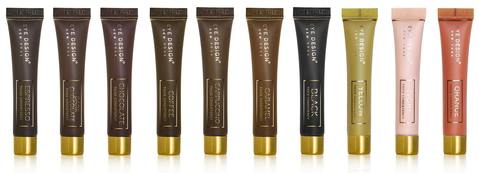Microblading Pigments FAQ - What is microblading pigment & ink made of

Organic or Inorganic Microblading Pigments?
Organic is a major buzzword throughout the beauty and lifestyle communities. By and large, we are conditioned to believe that everything organic is “good” and everything inorganic is “bad.” for pigments? But it is not that simple--and in many cases, the opposite is true this FAQ will help you decide.
Yes, organic foods are better for you because they are not full of (potentially harmful) artificial additives such as pesticides growth hormones. But that doesn’t mean you won’t gain weight or that you are immune from developing any other health conditions on an all-organic diet.
This notion holds especially true for beauty products. In fact, some artificial ingredients are actually extremely beneficial in skincare and makeup. Case in point? Eye Design’s mineral-based Microblading Pigments.


I designed this innovative pigment with the best ingredients and to deliver the best results. Some of the ingredients are, in fact, inorganic.
What is microblading pigment made of?
In chemistry and, therefore, in formulating microblading pigments, the term organic has a slightly different meaning than it does in food. Simply put, organic chemistry involves molecules that contain carbon compounds, while inorganic chemistry involves all compounds that do NOT contain carbon compounds.
Certain inorganic ingredients allow Eye Design’s pigments to be shelf-stable and last longer. If they were completely, 100-percent organic, they would require refrigeration, and they would have much shorter lives. Organic pigments also tend to migrate under the skin, while our inorganic pigments do not migrate whatsoever.
This is because organic products break down much more quickly, both in the package and on the skin. Because they are formulated with inorganic ingredients, our pigments are extremely rich, and a little goes a very long way.
Similarly, thanks to inorganic ingredients, my pigments are hypoallergenic and safe for all skin types--even sensitive. We developed it with all skin in mind.
So many natural ingredients commonly used in beauty products are known to cause allergic reactions, such as lavender, tea tree oil, lanolin, cinnamon (and derivatives) and various essential oils.
Safety facts for microblading pigments and inks
Based on this reasoning, inorganic ingredients are the safer, less harmful option for beauty products.
“The word 'chemicals' tends to have a fearful, negative connotation among consumers but in truth, everything around us is composed of chemicals. Just like there are good and bad natural and synthetic ingredients, there are good and bad chemicals,” Bryan Barron, content and research director at the research-based cosmetics review, tells Choice.com.
“There are lots of great natural ingredients just as there are lots of great synthetic ingredients--the best products utilise both to the consumer's advantage!"


suzy — April 22 2019
hi ,
thank you for giving such an in depth explanation .
would you be able to send me a tester for trial .
thank you .
suzy